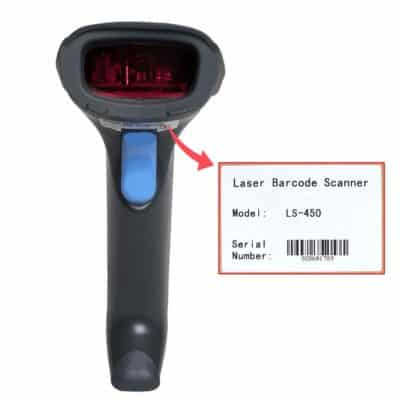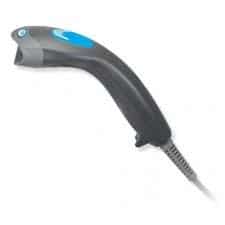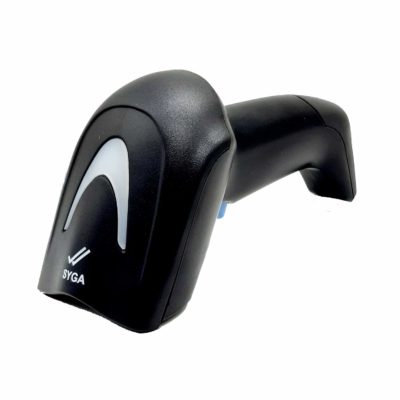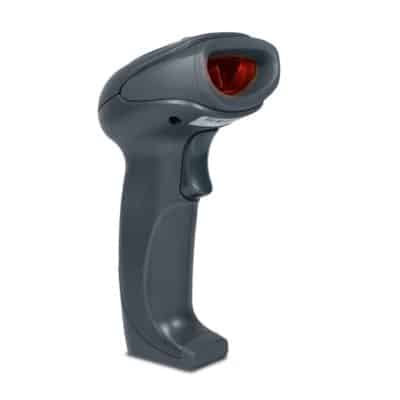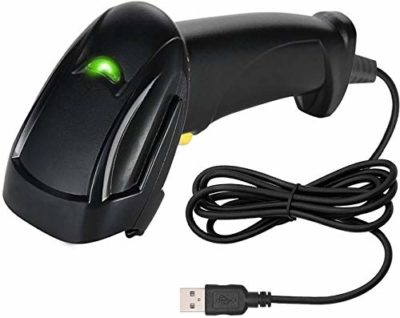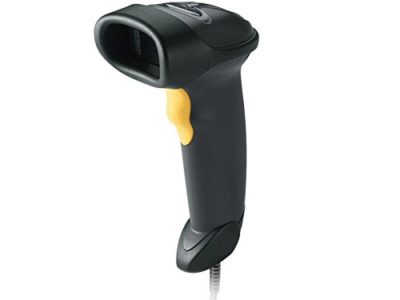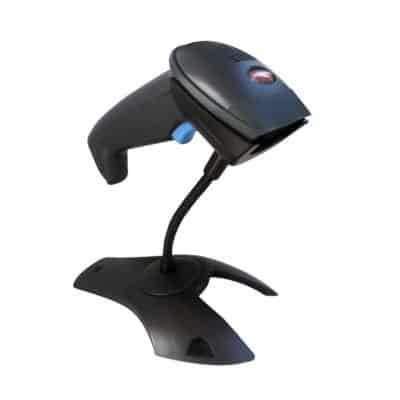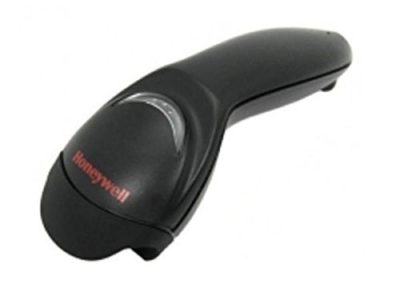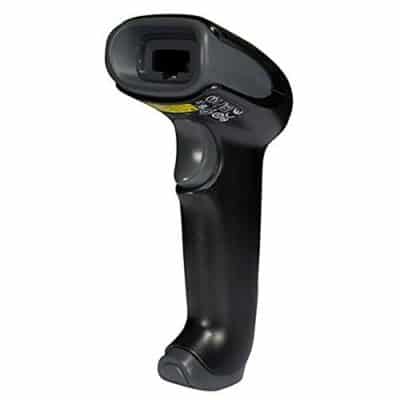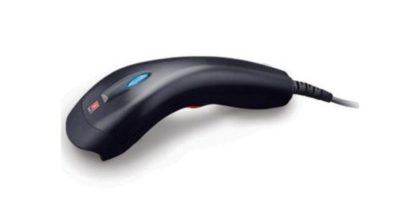Top Barcode Scanners In India
Somewhere between the coded black and white lines of a barcode, is a bulk of information that requires barcode scanners for decoding.
How does barcode scanning help? Ask any retailer, and you will come to know how barcode scanners have revolutionized inventory management.
It vastly improves retailers’ efficiency as it provides improved process, automatic identification, and rapid-fast data capture functionality. It helps in efficient inventory tracking, improved POS management, and checkout time as well.
If you are a business owner and think of taking your business to the next level, owning a barcode scanner might help you do so.
An average buyer can definitely get overwhelmed with all the options available. Like how 2D Barcode Scanners differ from 1D Barcode Scanners?, Different types of the barcode scanner, etc.
This article shall look at the different types of barcodes, how it works, things to consider while buying barcode scanners, FAQs, and the best 1D barcode scanners.
So let’s gear up for a plethora of information available.
Top 10 Best Barcode Scanners in India
| Product (Best Brands) | Best Price |
|---|---|
Types of Barcodes
Barcodes utilize a simple yet efficient system to categorize different objects. Basically, they are a set of numbers, unique for each product. Barcode is a more technical way to store data for fast processing through the computer.
Each barcode symbol follows an algorithm for encoding and storing information.
One-Dimensional (1D) Barcode Types
Linear or 1D barcode represents encoded data in a series of variable-width lines and spaces.
Code 39
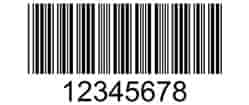
Despite being one of the oldest barcodes in the world, code 39 is still widely used. It is a basic linear 1D code, which finds operations in electronics, healthcare, and other such sectors.
It has the capability to include all 128 ASCII characters. The Code 39 barcode consists of a start character, data digits, an optional check character, and a stop character.
Code 128

Code 128 is a barcode derived from the ASCII set of numerals and alphabets.
Code 128 is the highest-density linear barcodes, widely used in applications where a relatively large amount of data must be encoded.
The worldwide packaging and shipping industry relies on code 128 for all types of operations. It is commonly used for its simplicity.
Interleaved 2 of 5
Interleaved 2 of 5 is a type of barcode that only consists of numerals combined in sets of 2.
The total number of numerals should be even, so 0 is added along with the odd numbers. It is mainly used in warehouse operations, making it a great warehouse barcode scanner.
UPC
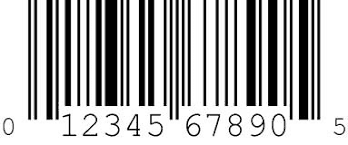
UPC stands for universal product code and is the most commonly used barcode in any area of operation.
These are 12 digit numbers that are assigned by GS1 ( Global Standard Organization ).
You will find it in every product in a retail store or shopping centre. Each registered company has its own UPC’s.
International Article Number
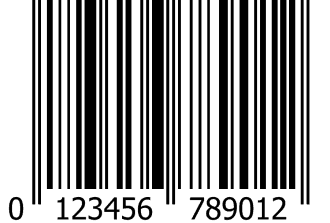
Commonly abbreviated as EAN, these barcodes are considered as the superset of UPCs.
They are mainly used in the literature industry for identification in bookstores and libraries.
They have 13 digits ( 12 data and one check digit ) and are made from International Standard Book Numbers (ISBN).
Two-Dimensional (2D) Barcode Types
2D barcode is encoded in the patterns of squares, hexagons, dots, and other geometrical shapes.
This encoded data is arranged in horizontal as well as vertical pattern and hence read as two dimensional.
2D barcode appears much smaller than 1D; however, it provides much higher storage capacity than 1D( up to 2000 characters ).
PDF417
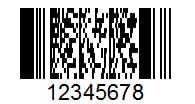
They are a type of 2D barcodes mainly used in governmental documents like Aadhar card, Driver’s license, etc.
They can store a range of data. However, they are also four times larger than normal 2D barcodes.
Data Matrix
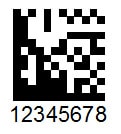
Data matrix is the most used 2D barcode due to the plethora of information it can store despite being smaller than PDF417.
They are the go-to barcodes in electronics, healthcare, and software industries.
QR codes
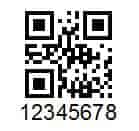
QR( Quick Response ) codes are gaining popularity quickly due to their wide web-related applications despite being less compact and having less storage space than Data Matrix codes.
This is due to their ease of use and compatibility to be read by anyone even with smartphones and a simple bar code reader application.
QR Bar code reader easily scans the merchandise price tag and finds out where the product is available.
How Barcode Scanners work?
Since a computer or any other electronic device cannot recognize human handwriting, numbers from 0-9 represent different black and white lines for each number.
However, reading this special type of code is difficult for the human eye. This is where the barcode gun comes in.
Every barcode scanner machine has three basic and essential parts.
They are the illuminator, scanner, and decoder.
As the name suggests, the illuminator throws a red light on the code; the scanner makes out the code by scanning the red light, reflecting and the decoder makes sense of the scanner’s information.
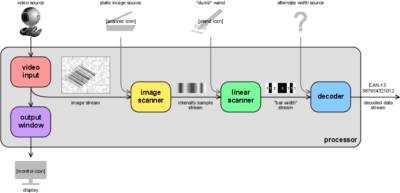
Illuminator: It can be of various types like single point LED or Linear multiple LED
- Single point LED: This consists of a single LED. The LED has to contact the code to recognize it physically, and the single LED has to be rolled on each line of the code.
- Linear multiple LED: This is quite similar to single point LED’s in the scanning aspect but consists of multiple LED’s placed in a line so that the illuminator doesn’t have to be rolled on the code.
- Laser: This is the most widely used illuminator at present, due to the convenience it offers. The laser beam is produced by a red diode, which is scattered by an internal mirror. Due to the scattering, codes can be scanned even from a distance of 20 feet.
- LED Imager: The LED Imager is a combination of LED type and Laser type illuminators. The disadvantage of LED types is covered by increasing the intensity to give the illuminator more range and scanning distance.
Scanner: The scanner is embedded with a photoelectric cell which is used to detect the light. Red light is preferred due to its high wavelength.
The white lines reflect the most light while the black lines reflect the least.
The photoelectric cell senses the white and black lines to create a voltage fluctuation, which has a wavy pattern when plotted on a graph.
Decoder: The wavy pattern is saved as an image and sent to the detector.
The pattern is unique to each type of product. It will be in an analogue format, and the decoder converts it into a digital signal.
The decoder has a stored database that consists of all the patterns in the system.
Its job is to match the pattern given by the scanner to one in the database. By doing this, it figures out the product and its details.
Types of Barcodes Scanners
Pen-type or wand scanner
Pen types are the most basic of all barcode scanners and the most cost-effective ones as well. They have a small tip in the front and are shaped like a wand.
The tip contains the illuminating device as well as the scanner.
The user rolls the tip over the code to scan it.
The speed at which the user rolls it is vital as the scanner will not recognize the code or make errors if it is rolled too fast or too slow.
It can’t be used on a large scale as it is quite slow compared to other barcode scanners and is susceptible to human errors.
Laser scanner
As the name suggests, this type has a laser as an illuminating device in front of the scanner.
A diode emits red light as a point. The point of light is made to fall on a mirror or prism, which scatters it into an array of light. It is made to fall on the code and reflect.
The possibility of error and non-recognition is reduced significantly in laser types compared to pen types.
They can be mounted on a system or handheld for convenience.
Due to all these advantages, laser types are generally preferred over other barcode scanners for small-scale tasks.
These are an affordable option; however, they are capable of reading only 1D barcodes. It can read barcodes from 2 to 12 inches distance.
Some high-end models can even read from 20 feet distance. The powerful Wasp Barcode Scanners can read from 35 feet away.
2D Area Imager
In recent times, special bar codes that are two dimensional have been created. They don’t contain black and white lines but have black and white spaces.
The technology used by the 2D area imager and Liner imager scanner is the same. The difference is that the 2D area imager can read any barcode – 1D, 2D, and stacked.
The advantage of these barcodes is that they can store a lot more information compared to conventional barcodes. They need a special type of scanner called a 2-D imager.
The 2D area imager also intelligently captures the barcode and can read codes from all the directions.
They can read barcodes from any surfaces like labels, computer screens, etc.
They are quite similar to CCD scanners as both have a line of tiny lights numbering in hundreds. However, 2-D images have multiple rows of lights for scanning.
They can scan many barcodes in a small amount of time and are mostly used in large-scale industries.
CCD Barcode Scanners
Charge Couple Devices (CCD) barcode scanners are made by placing a miniature sensor in the front-end of the readers.
CCD scanners produce a waveform that gets in contact with the spaces and bars, resulting in decoding the information.
The decoded information is forwarded to a computer.
Smartphone scanner
With the advent of technology, a few things a smartphone can’t do these days.
Needless to say, Android and iOS developers have even given scanning capabilities through apps to scan barcodes, QR codes, and data matrix codes.
The only requirement is an auto-focus camera that is present even on budget smartphones these days.
The camera plays an illuminator role, while 3rd party apps can scan the code and decode it to give the user information about the product.
They are not used extensively but come in handy when there is no other option.
Bar Code Scanner Buyer’s Guide
After confirming the type of barcode scanner, a set of basic needs and requirements must be examined to figure out the exact barcode scanner you need.
Battery and Charging
If you go for a wireless system, make sure that you check the battery type and its capacity. Go for a lithium-ion battery having a capacity of 2200 mAH or more.
The charging time should be less, and it should have longer battery life.
Cord or cordless?
One of the criteria to think about is whether you need a cord or cordless scanner. Both have their own set of advantages and disadvantages.
Cord barcode scanners are really simple to use, and the accessories are available everywhere. The cost of these scanners is also quite low compared to the cordless type of scanners.
Information is always fed into the system in real-time while some cordless barcode scanners have batch memory, meaning they have to be plugged in after scanning a set number of codes to process the codes.
All cordless scanners work differently. Some have chips in the handle that stores the data. It needs to be updated frequently.
Bluetooth scanner updates and evaluates items while you enter the information, which facilitates instant updates.
So if you have a large industry and need to run around to scan products, then the cordless variety is best for you.
Durability
Your workplace in which you need the barcode scanner to function also plays a major role in determining what scanner you need.
In most cases, if barcode scanners’ requirement is internal, like in warehouses, factories, etc., a less durable barcode scanner won’t be such a problem.
However, if the barcode scanner is needed in a place like port docks, utility warehouses, a scanner can withstand dust, water, and physical damage.
The durability of a barcode scanner is judged based on its IP rating and drop resistance.
Scanning distance
The scanning distance is another crucial criterion that needs to be in consideration before buying. As discussed previously, Some barcode scanners are way more competent in scanning things far away than others.
If you need to scan signs that are hung up on the industry wall, you would definitely need a laser type barcode scanner.
However, if the codes or signs are two-dimensional in nature, you would need a scanner that should read the 2D sign.
Scanning speed
Scanning speed is one aspect of a barcode scanner, which varies from one specimen to another. They are primarily built on the requirements of each type of user.
A worker in a shopping mall can get away by scanning one product in 10 seconds.
However, on an industrial scale, scanning 1 product in 10 seconds will be a severe limitation to the production process.
Some industrial scanners can be so powerful that they scan 1000 items in a second, but this amount of speed won’t be required in most cases.
Ruggedness
It is advisable to choose a rugged scanner. Even if you work in a decent environment, mishaps may happen.
As rugged scanners are shockproof and dustproof, and most of them can withstand 6 feet fall, they can work efficiently for a long time.
Although they are a bit expensive, they are good for long term investments.
1. Retsol LS 450 Laser Barcode Scanner
Retsol has been at the forefront of manufacturing industrial goods for more than ten years. The LS450 Barcode Scanner is one product that is cost-effective but doesn’t skimp on features at all.
It is a 1-D laser type barcode scanner with a 650 nm visible laser diode, perfect for retail operations, industries, and even small-scale operations.
It is run by a 32-bit processor and supports almost all types of software available for barcode scanners. The scanner is run by a 2-meter long cord that supports USB 2.0.
The total scannable width is 200mm or 20 cm, with an angle allowance of up to 65° degrees.
With a size of just 173*70*68 mm and a weight of 173 grams, it can easily be held and operated in one hand.
The scanner is IP certified, meaning it can withstand dust, water, and physical falls from a certain distance.
- It comes 32 bit CPU for optimal scan rate and scan distance.
- Scan Rate is up to 100 scans per second.
- Offers a scan width of 200 mm and 0-280mm scan depth of field
- It can decode EAN-8, EAN-13, UPC-A, UPC-code 39, Code 128, EAN 128,Codabar, Industrial 2 of 5,Interleave 2 of 5, Matrix 2 of 5,MSI etc
- It has USB 2.0 for connection of the cord.
- It has both manual and automatic triggers for code scanning available.
- IP54 rating for dust and water durability.
- Easy to use and set up even for a beginner
- It can be easily operated using one hand.
- Both manual and automatic detecting are available.
- Long, 2-meter cord, is provided
- Support for Windows, Mac and Linux OS
- Supports almost all 1D code formats that are currently being used
- Up to 100 scans per second possible
- Cannot be used with smartphones or tablets
2. TVSE BSC 101 Bar Code Scanner
TVS is a leading company in electronics, and they have a wide range of barcode scanners in their portfolio.
The TVSE BSC 101 is one of their successful offering in handheld barcode scanners to the date. This is because it packs in a lot of features for the price.
The selling point of this 1D barcode scanner is the speed of scanning. It can scan up to 330 codes per minute, which is unprecedented at this price range.
The high scan speed and accuracy is due to the increased resolution of 2500 pixels. There are also a lot more features to be found in this product. Here are a few.
- A very high scan rate of 330 scans per minute, which is way above par
- A scan angle of 52° means it can decipher a code even when placed at the specified angle.
- Red, blue and green colour LED’s as indicators for the scanner.
- The depth of field between 0-300 mm, which also improves accuracy
- Can interface with both USB 2.0 and wand unlike other scanners
- Dimensions of 106*58*155 mm and weight of just 148 grams
- Standard 2.0 mm connecting wire included.
- Can decode all major 1-dimensional barcodes
- Support for both manual and automatic scanning, which can be useful when more scans need to be done
- Comparatively more durable and sturdy than competitors
- Easy to use and configure even for beginners and less tech-savvy people
- Ultrascan decoding facility and 32-bit processor installed, which improves the accuracy of the scanner
- Greater depth of field that is between 0-300 mm
- No type of IP rating.
3. SYGA 1D Barcode Scanner
SYGA 1D barcode scanner is a CCD handheld barcode scanner that is designed for ultra-fast and ultra-efficient reading. It provides CMOS image scanning on your POS screen, phone screen, computer screen, and paper.
It is a high-performance barcode scanner that can easily read fuzzy barcode, noise barcode, low contrast, damaged scratchy barcode, and vertical perspective barcode.
- It features a plug and play design that provides easy installation with any USB port. It is ideally suitable for shops, businesses, and warehouse operations.
- It can also read on-screen barcodes, including PC screens, phone screens, or POS screens.
- It can scan and read all types of 1D barcodes, including code39, Code11, Code128, Code32, Code93, and Coda Bar (NW-7).
- It can also decode UPC-A, ISBN, UPC-E, ISSN, EAN-8, ISBT 128, EAN-13, GS1-28, industrial 2 of 5, matrix 2 of 5, interleaved 2 of 5, standard 2 of 5(IATA), China Post, Plessey, RSS, MSI Plessey, etc.
- It features 300 configurable options for scanning prefix, suffix, and termination strings.
- It measures 182 mm * 67 mm * 97 mm in dimensions, and it weighs 160 grams without the cable.
- It is a wired scanner that comes along with a cable.
- It provides a scanning depth of 10mm-600mm and can read the print contrast greater than or equal to 20%.
- It is prepared from sturdy ABS plus PC material that ensures long-lasting usage.
- The technical specifications include input voltage of DC 5V±5%, output voltage(Typ.) of +3V ±5%, operating current (Typ.) of 73mA, and standby current (Typ.) less than 30mA.
- It is a highly cost-effective barcode that provides long working hours. It is suitable for small to medium-sized firms, retail stores, or enterprises.
- It provides an exceptionally fast scanning speed of 300 scans per second.
- It’s ultra-fast, and high-efficiency scanning makes it suitable for scanning large volumes of barcodes across various applications.
- It features three scan modes, including manual, continuous, and auto-sense. You may choose any of the modes as per your scanning requirement.
- It highlights the red light source (LED) during scanning and indicates by a buzzer sound.
- It offers various scanning angles including pitch angles of ±60°; roll angles of ±30°; and skew angles of ±60°.
- It is not suitable for scanning 2D barcodes like QR codes.
4. iBall 2.4GHz Wireless Barcode Scanner
The iBall Barcode scanner uses a wireless technology of 2.4 GHz to scan the barcode. It has a precise aim and shoots function that ensures accurate and fast data entry operation.
The model works with a 2200 mAH Lithium-ion battery that requires a charging time of 6 hours.
This scanner also has a light-weight and ergonomic design, which makes it easy to scan with. Moreover is capable of scanning 300 scans per second.
- It functions using 2.4 GHz Wireless technology.
- Built-in memory of 1 Mb.
- Supports all standard 1 D barcodes.
- Working distance is up to 100 meters.
- The light source is 650 Nm laser diode.
- It has a scan rate of >= 300 scans/sec.
- Has a mini USB charging cable.
- Battery type: Lithium-ion, 2200, mAh.
- The charging time it requires is 6 hours.
- It comes with vibration, LED, and beeper indicator.
- It is shock resistance of up to 1.5m drops.
- It is made using ABS plastic material.
- It comes with a sharp aim and shoots reading for high performance.
- Light-weight and ergonomic design makes it easy to use.
- Ensures accurate data entry operation.
- The durability of the product could be better.
5. Livato Scanmore Barcode Scanner
The Scanmore USB Barcode scanner is capable of superior reading for all 1 D barcodes.
It is a wired handheld scanner that is easy to use and comfortable to operate. The scanner is mostly suitable for offices, retail stores, warehouses, showrooms, supermarkets, etc.
It offers shock resistance to ensure durability and safe use of the product. Moreover, the low power consumption and convenient manual operation make it a recommended option to consider.
- This is a wired handheld barcode scanner.
- The light source is a visible laser diode of 650 nm.
- Supports a USB interface.
- It can read all 1 D barcodes.
- It has a manual and continues scanning scan mode.
- Scan speed: 120 times/sec and a scan accuracy of 0.10-0.825 mm.
- Reading distance: 10-820 mm
- Print contrast is 30 %
- Scan indicators are LED Light and buzzer
- Drop test: 120 times/1.5 m
- Scanning angle: Elevation angle is 60 degrees, and the inclination angle is 45 degrees
- It is easy to use and comfortable to operate in POS systems of offices, supermarkets, showrooms, warehouses, retail stores, etc.
- Low power consumption.
- Can work seamlessly on Linux OS, Window or Mac to scan and upload on Excel or Word.
- Superior reading with advanced decoding algorithms.
- No negative points were observed so far.
6. Zebra Symbol LS2208 Laser Barcode Scanner
Zebra is a subsidiary of the legendary Motorola company who is still one of the world’s leading electronics and mobile phone manufacturers.
Although it is a bit pricey compared to other products on this list, you can rest assured of the quality it brings to the table. Here are some other features of this popular product.
- Handheld barcode scanner with 650 nm visible laser diode which is quite the norm for handheld barcode scanners.
- It has 50 Hz of scan element frequency
- Bi-directional scanning type with a scanning rate of up to 100 scans per second
- External power supply possible, which is unique among handheld scanners in this price range
- 152*63*84 mm in dimension, which is quite compact
- Weight of 150 grams, which makes it super lightweight
- Can scan UPC/EAN, UPC/EAN with Supplementals, UPC/ EAN 128, Code 39,Code 39 Full ASCII, Code 39 TriOptic, Code 128, Code 128 Full ASCII,Codabar, Interleaved 2 of 5, Discrete 2 of 5, Code 93, MSI, Code 11,IATA, GS1 DataBar (formerly RSS) variants, Chinese 2 of 5
- Supports USB, RS-232, Keyboard Wedge, IBM 468x/9x interactivity 104db+/-3
- Scanning angle of up to 60 degrees, which is adequate for handheld scanners
- Extremely well built and top-notch design and build quality compared to other barcode scanners in the list
- Supports Android devices and tablets, which is unique among handheld barcode scanners
- Supports a variety of interfaces and major languages unlike other barcode scanners
- External power supply possible
- Drop resistance of 1.5 meters
- IP 20 rating for protection against dust and water
- The user can change the data on the scanner itself before sending it to the computer
- Expensive
7. Pegasus PS1146A 1D Laser Barcode Scanner
Pegasus is an Indian brand aiming to make strides in the electronics tech business. It is safe to say that they have largely been successful at it.
The PS 1146 is a 1D scanner ideal for retail, healthcare, office, and industrial uses due to its compact size, ease of operation, and very high scanning speed.
Along with all these aspects, this barcode scanner also has many more features that may be appealing to consumers. Here are a few.
- Handheld barcode scanner with a 650 nm visible laser diode, standard across handheld barcode scanners
- It offers 0-250 mm depth of scanning field
- The scan speed of 300 scans per second which is very high and can rival some industrial scanners
- Capable of scanning only single lines of maximum 20 cm length
- Maximum resolution of 4mil
- Only manual scanning type is available while others in price range also offer automatic scanning.
- USB-HID, USB-COM, PS2, and RS-232 are the supported interfaces
- The dimensions are 155*65*85 mm, which is quite compact.
- EAN-8 EAN-13,UPC-A ,UPC-E,Code39,Code128,EAN-128,Codabar,Industrial 2 of 5,Interleave 2 of 5,Matrix 2 of 5,MSI,China postcode etc are the supported 1-dimensional barcodes
- Very high scan rate, that is 300 scans per second, making it a worthwhile choice for industrial applications
- It has a very low error rate and can read even smugged or damaged barcodes, which is unique
- Made from pure ABS thermoplastic material which is heat resistant, others in the same price segment have PVC components, which isn’t resistant to heat
- Very compact and lightweight, making it suitable for all kinds of operation
- The company claims that the product has a shockproof design
- Only compatible for Windows Operating System which means Android, Mac OS, and Linux users cannot use the product
8. Honeywell Eclips 5145 Barcode Scanner
Another multinational company with an excellent image in the electronics tech world is Honeywell. They themselves have been responsible for some of the improvements that you see in modern-day barcode scanners.
Quite a few of these features have also been implemented in the eclipse handheld laser barcode scanner.
Like the Zebra barcode scanner on this list, the eclipse is quite pricey for the features it offers, but the peace of mind you get when buying a top-class brand’s product is unmatched.
Here is a list of things that sets this product apart when compared to the competition
- The dimensions of this device are 169*63*51.
- The weight of the scanner is only 100 grams which is the lowest in this price range.
- Handheld barcode scanner with a 650 nm visible laser diode which is the standard for handheld barcode scanners.
- USB, RS-232, Keyboard Wedge, IBM 468xx (RS485) are the supported interfaces on this barcode scanner
- The scan speed is up to 72 scans per second
- A scan angle of 52 degrees, which is again quite low
- Excellent build quality and finish which is seen in barcode scanners belonging to this category
- Supports most of the interfaces that the owner of a retail operation would need from a scanner
- Honeywell’s patented CodeGate tech is installed, meaning that a code’s info can be obtained by simply pushing a single button
- Another Honeywell exclusive feature is the CodeSense tech, which means a barcode scanner can be switched on by detecting a barcode, without a single push of the button.
- Supports only Windows OS. Linux, Mac OS, and Android users will be disappointed
- Scan speed is low
9. Honeywell 1250G Barcode Scanner
Another Honeywell barcode scanner on this list is the 1250G and is also one of the costliest scanners.
It belongs to the top-rated voyager series of scanners from Honeywell. It is incorporated with some of Honeywell’s patented technologies which makes it special. Here is a list of important features.
- Handheld laser type barcode scanner with 650 nm visible laser diode along with a scratch-resistant glass screen
- Made especially for decoding linear barcodes in supermarkets, retail stores, industries, ports, etc
- Special software installed to read broken, damaged or faint barcodes, so that the error rate is drastically reduced
- The maximum scanning distance of 65 cm, which is fairly decent for the price range
- Maximum scanning angle of 60 degrees which is again decent enough for the price
- Multi-interface; includes USB (HID Keyboard, Serial, IBM OEM), RS232 (TTL + 5V, 4 signals), Keyboard Wedge, RS-232C (± 12V), IBM RS485 supported via adapter
- It measures 60*168*74 mm and weighs 133 grams
- It offers a depth of field nearer to 17.6 inches.
- Very rigid and sturdy design so it is useful in a number of operations in every type of industry
- Can read almost every type of one-dimensional barcode currently in use
- The maximum scanning distance of 65 cm which is very decent
- Ability to read barcodes that are deformed or written in faint lettering
- Honeywell’s exclusive code gate technology is pre-installed
- Expensive
10. iBall Laser Barcode Scanners LS-392
The last device on this list is from the Indian manufacturer, iball. The company produces many computer components like a mouse, keyboard, etc. as known to many.
However, only a few people know about their operations with barcode scanners. They are one of the few well-known Indian companies to produce barcode scanners.
The LS 392 single-dimensional scanner is one of their best selling barcode scanners and not without good reason. Here are some of the important features of the LS 392
- Handheld barcode scanner with a visible laser diode of 650 nm like all other devices in this list
- Support for the only USB -HID and USB-COM with an ergonomic and innovative design language
- Supports four mil barcodes
- Supports all major one-dimensional barcode languages in use currently
- No automatic trigger mode. Only manual mode present.
- The scanner measures 75*170*70 mm and weighs around 228 grams
- Drop-resistant up to 3 meters, which is highest on this list
- Easy to use and configure even for beginners
- Very high scanning speed of 300 scans per second which is higher than most scanners in this range
- Decent depth of field ratio of 0-250 mm
- Can scan almost every type of one-dimensional barcodes available currently
- Highest drop resistance compared to any other barcode scanner in this list, that is 3 meters
- Made of good quality ABS and polycarbonate material for durability
- No IP ratings.
Frequently Asked Questions
1. What is the use of a bar code scanner?
The barcode scanner helps in scanning bar codes to read and store the information held in the particular bar code.
2. Can a bar code scanner read all bar codes?
Laser scanners read the bar code by reflecting light from the bar code’s black and white lines. Since the laser has only a single line, it can read only horizontal lines of the bar code.
Thus, it can read 1 D bar codes. 2 D barcodes have horizontal and vertical lines that store data; hence an image is used to read this type of bar code.
3. Can a picture of a bar code be scanned?
Yes, the right bar code scanner can scan the bar code picture provided the picture is of good quality.
4. How to maintain a bar code scanner?
Keep it away from a heat source that will tend to overheat it. It should not be stored in a dusty, wet or damp place.
Clean it with an anti-static synthetic cloth and a lens cloth, avoid using cleaning agents which might lead to abrasion.
5. Which is better – wired or wireless barcode scanner?
If your business requires employees to move around to scan the products, you should go for a wireless barcode scanner.
If you are scanning products in one place, you can go for wired scanners.
Wired scanners are cheap and fast while wireless scanners are a little expensive but provide mobility.
Conclusion
With barcode scanners, you can easily identify fast and slow-moving products in your store. It assists in keeping up with the consumer demand and provides fast replenishment of stocks. Moreover, it provides a quick and accurate capturing of data.
A barcode scanner helps the retailers in adjusting prices which leads to improved profitability. It’s a great tool to know your customers better and identify their buying habits. You can save on your operating, labour, and staffing costs.
Get your hands on a 1D barcode scanner or 2D barcode scanner as it’s something you can’t do without in this tech-driven world. To help you make the right choice here are our top picks Retsol LS 450 Laser Barcode Scanner, TVSE BSC 101 Bar Code Scanner and iBall WBS-650MV 1D Barcode Scanner.





